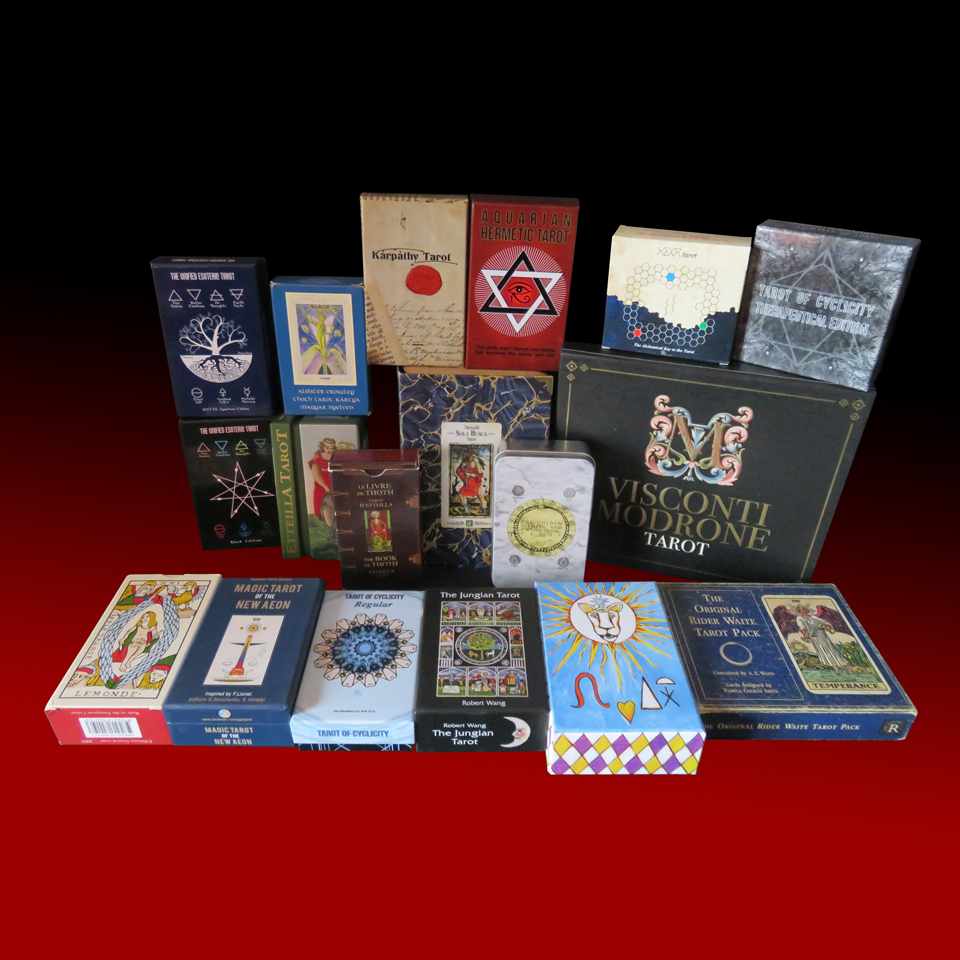
Warning: long read.
Of all the methods by which humans seek to peek into the future, into the mysteries of fortune and fate, Cartomancy is by far the most popular. Of all the Cartomancy methods, the one that arouses the most interest, at least in the last couple of decades, is the Tarot. However, not too far back into the past Tarot cards were hard to come by.
Tarot is not a ‘simple’ deck of cards by no means. Although it can be used efficiently to predict future trends, it is not necessarily a typical fortune-telling instrument. The Tarot is most likely one of the most complex and mysterious vehicles of preserving and transmitting ancient knowledge. How exactly ancient is that knowledge, nobody can determine. While the vast majority of scholars and authors seem to agree that the Tarot appeared in an “Ex nihilo” manner at the middle of the fifteenth century in Northern Italy, as a further development of the regular deck of playing cards, I seriously doubt that.
In my opinion, the Renaissance and the Tarot share one common trigger: the Council of Ferrara-Florence in 1438. According to researcher and author Michael Baigent, co-author of “Holy Blood, Holy Grail”, the Council was a magnet for Eastern scholars, and they brought with them a large number of manuscripts. I suspect that among those documents were also the blueprints for the Tarot.
The interpretation of the Tarot cards evolved from the fifteenth-century Christian iconography to the twentieth-century Jungian archetypical depiction. While most people may believe that our perception has changed and it was projected into the cards, I think all those layers of knowledge were originally embedded into the cards. We’re only rediscovering them layer by layer.
Hermetic Orders such as the Golden Dawn were initiatory organisations. A relatively detailed description of the inner organisation of the Order can be found in “A History of the Occult Tarot” by Ronald Decker. Like other alike organisations, the structure of the Golden Dawn was organised into three hierarchical orders, respectively ten grades according to the ten Sefirot of the Tree of Life. The first grade called Zelator was associated with Malkuth, and the highest grade, Ipsissimus was associated with Keter. They also had two additional grades, an entry grade called Neophyte and associated with zero, respectively an intermediate grade between the First and Second Order. The First or Outer Order had four grades according to the four elements, and each Aspirant had to pass a written examination and demonstrate specific knowledge to receive admission to that grade. Through this step by step initiatory system, the Aspirant was introduced to Astrology, Alchemy, Geomancy, Hermetic Qabalah, and the secrets of the divinatory Tarot. Having attained any of the grades, members had to absorb instruction in the magical doctrine revealed at that grade, having sworn a solemn oath not to divulge it to anyone.
At this point, another crucial distinction should be made. The Tarot has evolved in two different directions. One is the divinatory or occult Tarot; the other is the popular outshoot, the card-game Tarot. Cleverly, the later one allowed the survival and preservation of the divinatory Tarot in the darkest times of religious censorship. It is not clear what was the purpose of the oldest known Italian Tarot decks such as the Visconti-Sforza collection. These were extremely fancy, hand made and expensive works of art and due to the lack of naming and numbering of the cards, virtually inappropriate for playing card games. Allegedly, in the beginning, players were obliged to memorise the ranking and value of each card. The numbering of the Trumps appeared as a necessity to facilitate playing games. Initially, ranking and numbering of the Trumps had varied from one region to another.
The Tarot quickly became a popular card game across Europe. Most of the known Tarot patterns, including the so-called Tarot of Marseille, were created for playing card games. The Tarot of Marseille was initially imported from Italy when the French conquered Milan and Piedmont in 1499 and then manufactured in Marseille and Paris. Although their design and structure may incorporate and preserve some esoteric content, that content was subject of alterations due to repeated copying and creative additions. Famous Master card makers and image-merchants such as Francois Chosson, Jean-Baptiste Madenie, Francoise Tourcaty, Nicolas Conver, Jean-Pierre Payen or Jean Noblet were skilful engravers and traders. Still, realistically speaking, they lack any esoteric preparation. The secrets the engravers, woodblock cutters, passed down from one generation to another were not philosophical or esoteric matters, but professional craftsmen tricks. The clientele of the image-merchants were ordinary folks, especially sailors and Légionnaires, people eager to play card games. Marseille, the second-largest city in France, located in the South of France, on the Mediterranean coast, was one of the important European trading centre and the largest port for commerce, freight and cruise ships. Marseille, respectively Toulon and Aubagne is the home of the Foreign Legion Command. The name Tarot de Marseille was coined as late as 1856 by the French card historian Romain Merlin. The myth of the ‘esoteric’ nature of the Tarot of Marseille was first popularised notably by Paul Marteau.
The documented history of the divinatory Tarot only begins in the eighteenth-century. On the one hand, we have the writings of Antoine Court de Gébelin, Comte de Mellet and Etteilla, author of several Cartomancy manuals. On the other, is the widely underrated decks created by Etteilla. The “Grand Etteilla” and the “Book of Thoth” deck were specially designed for divination and fortune-telling. Etteilla used a different numbering and ordering system and a yet to understand astrological attribution of the cards. Etteilla’s work represents a firm departure from the card-playing standard of numbering. At the same time, his interpretation of the cards became the groundwork to many occult scholars to come including Papus, MacGregor Mathers, A.E. Waite and Aleister Crowley.
Genuine divinatory Tarot decks are rare and hard to find. The status of the Visconti-Sforza is uncertain; it is unclear if it was created for entertainment or other purposes. Another heavily disputed early Italian deck is the Sola-Busca Tarot. According to Tarot historian Giordano Berti, this alchemical deck was painted by Nicola di maestro Antonio and completed before 1941. It is also possible that from early days, Tarot decks were used both for card games and divination. For instance, the Tarocco Bolognese is a game playing deck. However, a one-page manuscript dated from the 1700s gives the divinatory meaning for thirty-five of the cards. Later, the Tarocco Bolognese became double-headed, and some editions were labelled on the top and bottom with divinatory meanings.
Oswald Wirth, Swiss occultist and student of Stanislas de Guaita, in 1889 created a divinatory Tarot consisting only of the twenty-two Major Arcana cards. His book, “Tarot of the Magicians”, first published in Paris in 1927, is a consistent guidebook to the symbolism and application of his deck. Although the deck went pretty much under the radar, it is a significant piece of the history and development of the divinatory Tarot.
The so-called Papus deck were twenty-two black and white drawings depicting the Trumps for his final book “The Divinatory Tarot” published in 1909. Papus commissioned Gabriel Goulinat to draw the twenty-two illustrations and used the reproductions of the Minor Arcana cards from the Etteilla deck for the other cards.
The one deck which was undisputedly the game changer is the Rider-Waite-Smith deck. In 1909 Crowley published his Liber 777, in which he revealed the secret attribution of Hebrew letters to Tarot Trumps. The man who seized an opportunity and took immediate advantage was A.E. Waite.
In 1907 the Busca-Serbelloni family sent from Milano to London, to the British Museum the black and white photographs of the complete Sola-Busca Tarot deck. Shortly after that, these photographs were placed on exhibit at the British Museum in London, displayed next to the twenty-three original engravings acquired by the Museum in 1845. Presumably, Waite had seen this exhibition and invited artist Pamela Colman Smith to study and make several sketches of the Sola-Busca cards. Waite commissioned for pennies Pamela Colman Smith to draw the complete deck which initially was published by the publisher William Rider & Son of London at the end of 1909. It can be subject to debate if the Rider-Waite-Smith deck is divinatory or commercial. In the accompanying book, “The Pictorial Key to the Tarot”, published the following year, Waite reproduced Etteilla’s interpretation of the Minor Arcana cards and was elusive regarding the Major Arcana cards. Although Waite is a widely respected scholar and occultist, the Rider-Waite-Smith deck was more likely a successful business venture. Therefore, it is not surprising that the Rider-Waite-Smith is still the most reproduced, respectively counterfeit deck. In terms of copyright, the deck belongs to the public domain in the U.S. since 1966, and it will belong to the public domain according to the European Union’s law from January 1, 2022.
The other highly influential deck is the Crowley-Harris “Thoth Tarot” which was eventually finalised in 1943, after five years of assiduous work. However, none of them was completely satisfied with the final result, and they agree not to publish the deck. Therefore, the first full publication was by Ordo Templi Orientis in 1969, twenty-two years after Crawley’s and seven years after Lady Harris’ death. Although it is questionable how the Ordo Templi Orientis copyrighted the deck in the first place, the rights will expire only by the end of 2039. Almost the same influential as the Rider-Waite-Smith deck, the Thoth Tarot is both highly popular and intensely counterfeit. The Thoth Tarot may be considered the first modern divinatory Tarot. Crowley’s guidebook, “The Book of Thoth,” wrote and published in 1944 is a detailed account into traditional Tarot and Western mysticism. Still, renowned scholars such as Gershom Scholem labelled Crowley’s kabbalistic expertise nothing but “highly coloured humbug”.
The devil lies in the details; there is one generally overlooked aspect regarding Crowley’s involvement with the occult. Officially Crowley never managed to gain admission into the Second – or Inner – order of the Golden Dawn. It means his esoteric training was never completed. Crowley’s mentor and one of the founding fathers of the Order, MacGregor Mathers personally admitted him into the fifth, Adeptus Minor Grade in Paris. However, the London members of the Golden Dawn opposed Mathers’ decision and refused to comply. The conflict triggered a schism which led to the downfall and the disbandment of the Order by the end of the 1930s. On the other hand, Professor Richard B. Spence speculates that Crowley was a secret government agent with the express mission to infiltrate and destroy the Golden Dawn.
Beginning with the seventies, divinatory Tarot became a commercially successful product. As a result, something spiritual was turned into material, and something extraordinary was transformed into ordinary. What once was at the disposal of an exclusive spiritually aware elite, suddenly became common merchandise. Tens, hundreds then thousands of artists with no esoteric knowledge whatsoever, started creating Tarot deck imitations. While some of these decks were aesthetically fanciable creations, others were of questionable taste, respectively more or less inspired re-renderings of the Rider-Waite-Smith standard. However, many of these decks lack the original or any esoteric content, and most of them, at best, are Tarot-like, Tarot inspired Oracles. May be noted that not any seventy-eight cards deck is Tarot. They may copy and preserve the structure of a standard Tarot deck, but lack its content – form without substance.
However, as always, there were a couple of notable exceptions. Only to name a few I would begin with the Gypsy Tarot and guidebook by German artist Walter Wegmüller and author Sergius Golovin published in 1975. One of my personal favourites is the Magic Tarot by French occultist Frederic Lionel published in 1980. Another exceptional deck is the Jungian Tarot by Robert Wang. Produced as an “Ecumenical Tarot” by Emil Kazanlar and combining Eastern and Western traditions, the Kazanlar Tarot is a rare but highly exciting deck published by A. G. Müller in 1994.
The last two decades, respectively, the nineteens and the two-thousands, have shown significant growth in both producing and buying Oracles and Tarot decks. On the one hand, a new species of deck creators emerged. Artists with no esoteric background started to create arty and so-called commercial decks massively. Truthfully, ‘commercial’ and ‘Tarot’ should not be used in the same sentence. The large variety of new ‘Tarot’ labelled products drew the attention of a broad audience. In some cases, quantity over quality prevailed.
Along with a handful of established publishing houses, new and specialised independent publishers and an army of self-publishing authors came into the scene. Besides the new generations of card readers, inpatient and eager to have quick results, a growing community of collectors appeared. Owning tens, hundreds or thousands of decks became a title of pride and glory, and sometimes proof of mastery. Professional advertisers created a desire for Tarot in order to sell more and more decks. People can’t discern between what they need and what they want. Some confessed on-line that they ‘accidentally’ bought the same deck two or three times cause they forget that they already have it. It is a desire to own things but not to learn, not to dedicate each deck the attention it deserves. I also believe that Tarot is not about showing off, but it is about introspection and elevation.
Each – genuine – Tarot deck has its own spirit. It may refer to a different esoteric system, for instance, a different astrological attribution of the cards or kabbalistic association. While most of the traditional decks were based on the Ptolemaic system, respectively deals with only the seven classical planets, modern decks may include nine, ten, eleven or twelve planets. Therefore, each deck requires dedication, special attention and a specific amount of time allocated for learning. It is a general misconception that one reading method can be transferred and applied to all, respectively, any other deck. Although this is theoretically possible – using one method for all the decks – practically it may be the easiest but not be the best solution. For example, several decks guiding books, including the original Rider-Waite-Smith and Thoth Tarot, relays mainly on Etteilla’s interpretation of the cards. Still, sometimes the meaning given to the cards may vary. Most of the decks created in the past two or three decades focus on the design of the cards, and the so-called LWB (little white book) is only of secondary importance. Things should be exactly the other way around. For example, the Magic Tarot of Frederic Lionel was published exclusively as an accessory of the book, “The Magic Tarot, Vehicle of Eternal Wisdom”. Surprisingly, while the cards are unavailable, one can still purchase the book separately. However, those cards without Lionel’s book is completely useless.
While most of the decks till the seventeens and eighteens were manufactured in Europe, the nineteens marked the mutation of most of the printing and publishing operations to China. Although China is one of the oldest paper manufacturers and printing pioneer of the world, the quality of the recently printed cards in China in most of the cases is not entirely satisfying. On the other hand, it has opened the door for large scale counterfeiting.
In my opinion, the relocation of the entire manufacturing industry to China was the biggest mistake the West committed, and it has many ramifications and repercussions. Although the products may be cheaper, the people back in Europe and the U.S.A. who lost their jobs are not able to buy those products anymore no matter how ‘affordable’ they get. Supporting local businesses is crucial to the development and prosperity of any community. Only when individuals prosper both materially and spiritually, the community will also thrive.
Cheaper products mean lower quality – high-quality standards at low costs is a utopia. While the price of manufacturing in China reduced the expenses considerably, both publishing houses and self-publishing authors were confronted with quality and piracy issues. While cheaper products reached a significantly larger audience, it also means that many individuals are less prepared – at least spiritually – to handle the Tarot.
The more affordable counterfeit decks may seem the opportunity of a lifetime, but the quality of the print and cardstock most of the time is horrible. Sometimes these products can be toxic due to the inadequate materials and production conditions. When one pays under ten U.S. Dollars for a deck of cards, under ten Dollars worth of product will receive.
One may lose its patience and ask how all these are related and relevant? The short answer would be that everything is connected. If one does not have the patience to read a couple of sentences, I think Tarot may not be suitable for her or him. Tarot requires commitment, investment of time and effort. Tarot is not about spectacular artwork, but about preserving and transmitting esoteric – meaning hidden – knowledge. Just like Tarot is not about interpreting imagines based on momentary inspiration and intuition, but it is built upon a consistent and continuously extending body of knowledge. Bringing down the wall of ignorance, brick by brick is the hardest thing to do. Unlearn things we ‘believe’ to be accurate or right is one of the greatest challenges. The Tarot, as an esoteric or occult instrument, is not about the visible, but it is about the unseen and hidden. Imagines can be illusionary and misleading. Those who are claiming that there are ‘easy’ ways to learn Tarot are most likely don’t understand anything about it. Learning is never easy, and it is not supposed to be easy. Knowledge is not at the reach of everyone. Not even in these ‘everything is one click away’ times when discerning between valid and fake information also requires minimal native intelligence and a certain level of education.
Both Tarot and preventing piracy is a matter of education, awareness and consciousness – both on the individual and collective level. Truly spiritual people are rare, exceptional – that’s a fact. Although the Tarot and Cartomancy community has grown considerably, the number of people willing to put time and effort into the learning process remains relatively low – and, in my opinion, this is probably the core of the issue. The leaders of the Golden Dawn were authentic scholars, and they understand the necessity of constant and step by step development. Modern man, however, considers it outdated and old-fashioned.
At a quick search on websites such as Wish or eBay, besides the classic Rider-Waite-Smith and Crowley’s Thoth, the most counterfeit decks are Ciro Marchetti’s “Gilded Tarot” and Kim Krans’s “The Wild Unknown”. Most of the sellers are from China, but lately, many new dealers came from Lithuania and Ukraine. Some of these entrepreneurs run apparently legal websites, have opened shops on Etsy, and one may find counterfeit products also on Amazon. Generally, when one seller is taken down, ten others step up to take the spot. It is an uneven, to some extent, desperate fight – the Don Quixote kind of way.
Some people only buy decks because they are beautiful or because they are cheap. However, when a deck is cheap, most likely, it is a counterfeit product. I think one genuinely interested in Tarot should buy only those decks from which she or he considers that can learn something and will use those decks effectively.
Being poor, respectively, not financially potent, is not an excuse. Initially on my website, strictly for educational purposes, I showcased hundreds of Tarot decks featuring each card. Then I learned that some people printed those decks at their local print shop on 220gsm paper. With due respect, these people are not Tarot enthusiast. One should respect other people effort and dedication. Printing out decks without permission or buying counterfeit products makes you partner in crime. On the other hand, it shows your actual level of spiritual development.
Real change is only possible from the inside towards outside and from the individual to the collective level. We can find legal and practical ways to shot down as many pirate sites and dealers as it is possible, but if we do not manage to change mentalities, our own way of thinking, it is utterly pointless.
Counterfeit Tarot decks and insatiable consumers


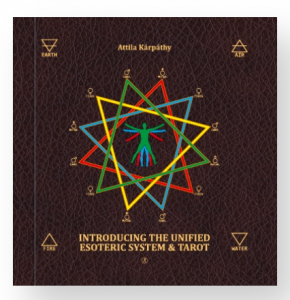
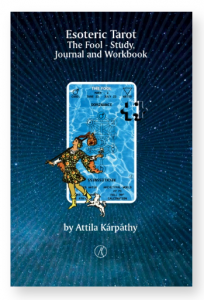

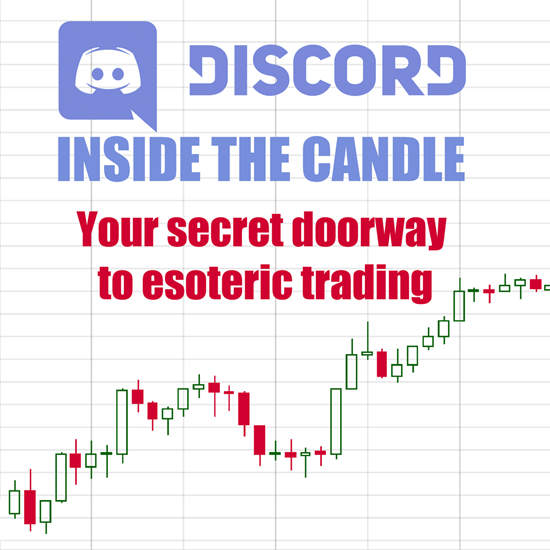
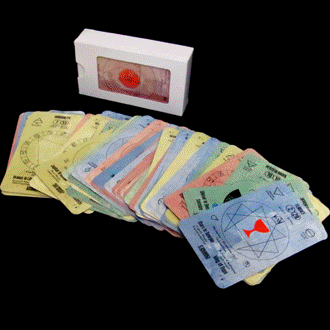
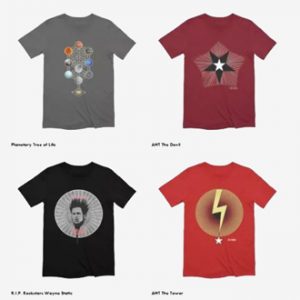
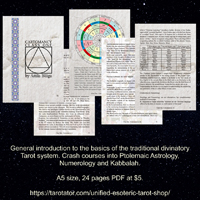
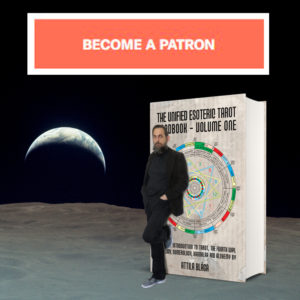
Saying people are “not spiritually prepared to handle the tarot” and at the same time tying materialism of tarot with spirituality to buy expensive is fucking mind blowing let me tell you that.
It is a free world, so, you are free to fuck yourself and feel happy about it. Have fun!